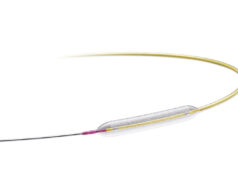
The latest progress in traditional heart surgery, minimally invasive and transcatheter techniques were presented in a two-day congress at the Heart Centre, University of Leipzig, Germany. The centre, which has been active since 1994, is one of the largest specialist hospitals in Europe, performing approximately 3,500 procedures per year. The congress was coordinated by Friedrich Mohr, Leipzig, Germany, in conjunction with Michael Mack, Dallas, United States.
Thomas Walther, associate director of the Clinic for Cardiac Surgery at the Heart Centre, University of Leipzig, Germany told Cardiovascular News International that the one of the main aims of the congress was to discuss whether new therapeutic options such as minimally invasive and transcatheter techniques are set to replace traditional heart surgery in the foreseeable future. “There is no doubt,” said Walther, “that an increasing number of centres across Europe have started such programmes. In our case, for example, transcatheter aortic valve implantations have recorded a double-digit growth over the year since the programme was introduced in 2006. But this represents an additional business, with no significant reduction in the number of conventional surgeries performed on a yearly basis.”
The first implantation of an aortic valve in humans via transfemoral approach was performed in 2002 by Alain Cribier. “I think all these new therapeutic options are progressing extremely well, but we need to recognise their limits as well as their potentials,” Walther said. “There is a clear position statement by the European Society of Cardiology and Cardiac Surgery, which recommends transcathater aortic valve implantation for elderly, high risk patients. We think that in younger patients with no additional risk factors, conventional heart surgery is so safe and so effective that it cannot be replaced. We are talking about a mortality rate of between five and 10% in some cases with transcatheter valves, whereas conventional surgery has a mortality rate of 3% or lower. If we want to extend the patient profile to younger candidates in the future, we need to start gathering data from randomised trials and we must address one of the main concerns, which at the moment consists of paravalvular leakage.”













